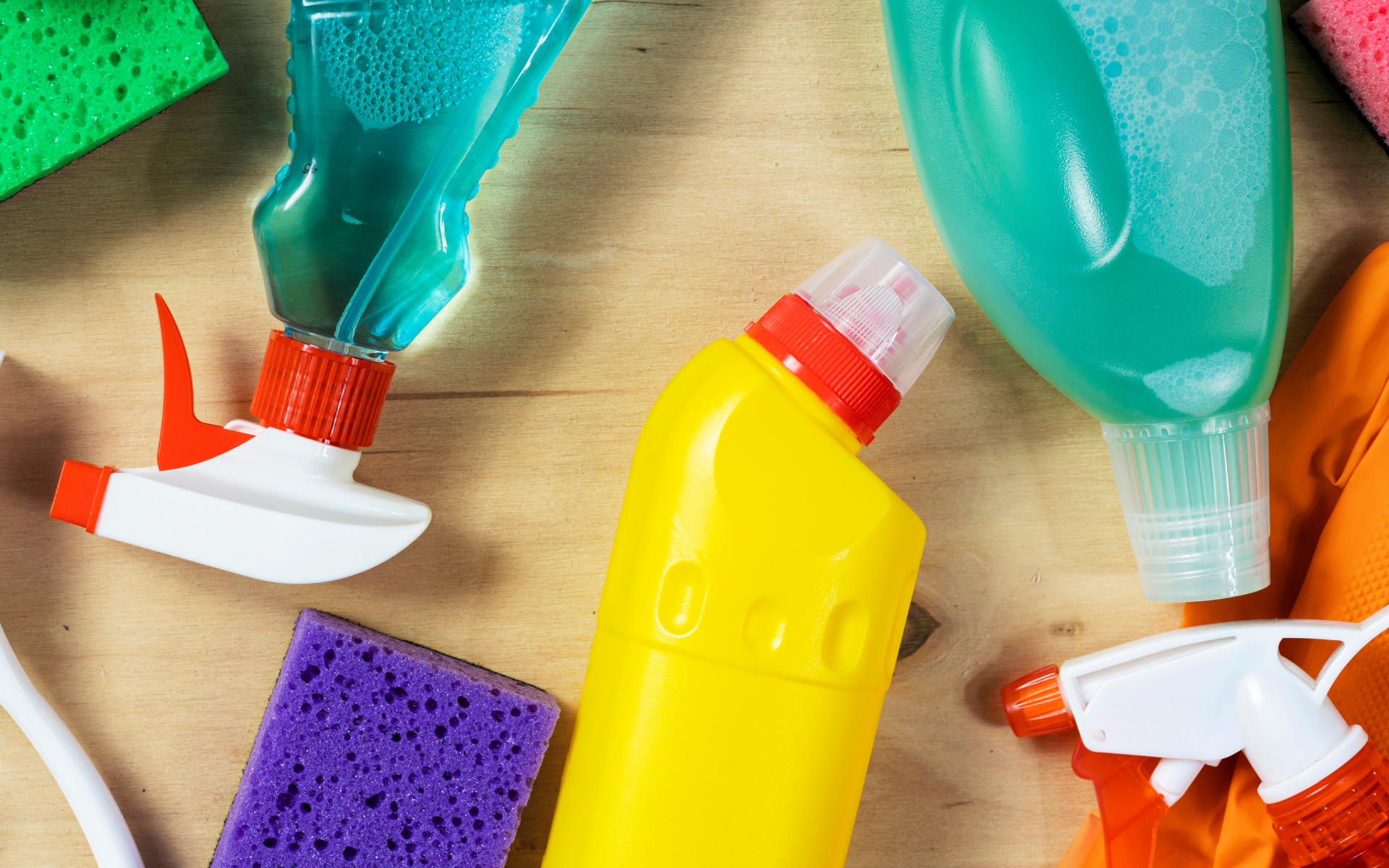Replacing Household Toxic Cleaners with Toxin Free Products.
Distilled white vinegar (also available in organic versions) is a cleaning powerhouse. The “vinegar” smell fades when it dries and you can easily mask it with a few drops of essential oil.
There are so many things around the home that you can clean with vinegar. There are a few things though that vinegar can damage. Since vinegar is acetic acid, it has a low pH that can dissolve certain substances.
Window and Mirror Cleaner
Vinegar is by far more effective than window cleaners for windows and mirrors. Here’s how to use it:
- Mix 1 part vinegar to 3 parts water in a spray bottle
- Add 1-2 drops of essential oil (optional, my choice:lemon/ lemongrass)
- Add 1/2 tsp of natural dish soap (optional)
- Use to clean windows and mirrors
Mold Remover
One part borax mixed with four parts white vinegar in a spray bottle does wonders for mold. Just spray it onto non-porous surfaces, wait about an hour, and wipe up. This works best for small areas of mold.
If you notice mold in the home this can indicate a larger, more serious issue. The mold you see may just be the tip of the iceberg and may need investigating further.
Hardwood Floors
1/3 to 2/3 cup of white vinegar in a gallon of warm water cleans hardwoods very quickly and easily. Be careful though as vinegar can damage certain wood finishes. Check with the manufacturer if possible before using vinegar on your floor.
Toilet Cleaning
Vinegar is great for breaking down minerals on hard surfaces. You can also add baking soda. Pour a little baking soda into the toilet, add 1 cup of vinegar and let it bubble. Scrub and admire the shine.
Cleaning Cabinets
If you have food spots, oil buildup, or stains on your cabinets, vinegar works here too. Mix 1 part vinegar with 3 parts water and scrub with a rag or sponge. The vinegar will cut any grease, leaving the cabinets clean and shiny.
All Purpose Cleaning With Vinegar
For everything else, you can easily make a homemade all purpose spray with vinegar. Here’s how to make it:
- Add 1 part white vinegar and 4 parts water to a spray bottle
- Add 10-20 drops of essential oil (optional)
- Add 1 tsp of natural dish soap
This spray works wonders on counter tops, high chair trays, baseboards, walls, appliances, floors, and everywhere else things can be dumped or spilled.
More Ways to Clean With Vinegar
- Faucets, showers, and bathtubs
- Add 1-2 cups of vinegar to the rinse cycle for softer laundry
- Use it to shine the kitchen sink or stovetop
- Clean and deodorize trash cans
- Use to descale a coffee maker
- Rinse produce from the store with vinegar before eating
- Make a DIY dusting with diluted vinegar and oil
Things You Should Not Clean With Vinegar
While vinegar is a weak acid, it’s still powerful enough to damage certain surfaces. Here are a few things around the home that could be damaged by cleaning with vinegar.
- Finished wood – I found adding a little vinegar to my mop bucket did great on my hardwood floors. However using too much or on certain types of wood can damage the finish. The same goes for furniture.
- Mold – Yes, vinegar does kill mold and I have used it for that. However the danger is you may just be scratching the surface of a bigger problem. See more below.
- Dishwashers and Washing Machines – Again, this one is controversial. Adding too much vinegar to these or using it too often can damage the rubber components over time.
- Stone Countertops – Vinegar can damage granite, marble, and natural stone countertops.
- Tile grout – Using diluted vinegar on occasion is a great way to give sealed grout a deep clean. Too much and too often though can erode the grout.
